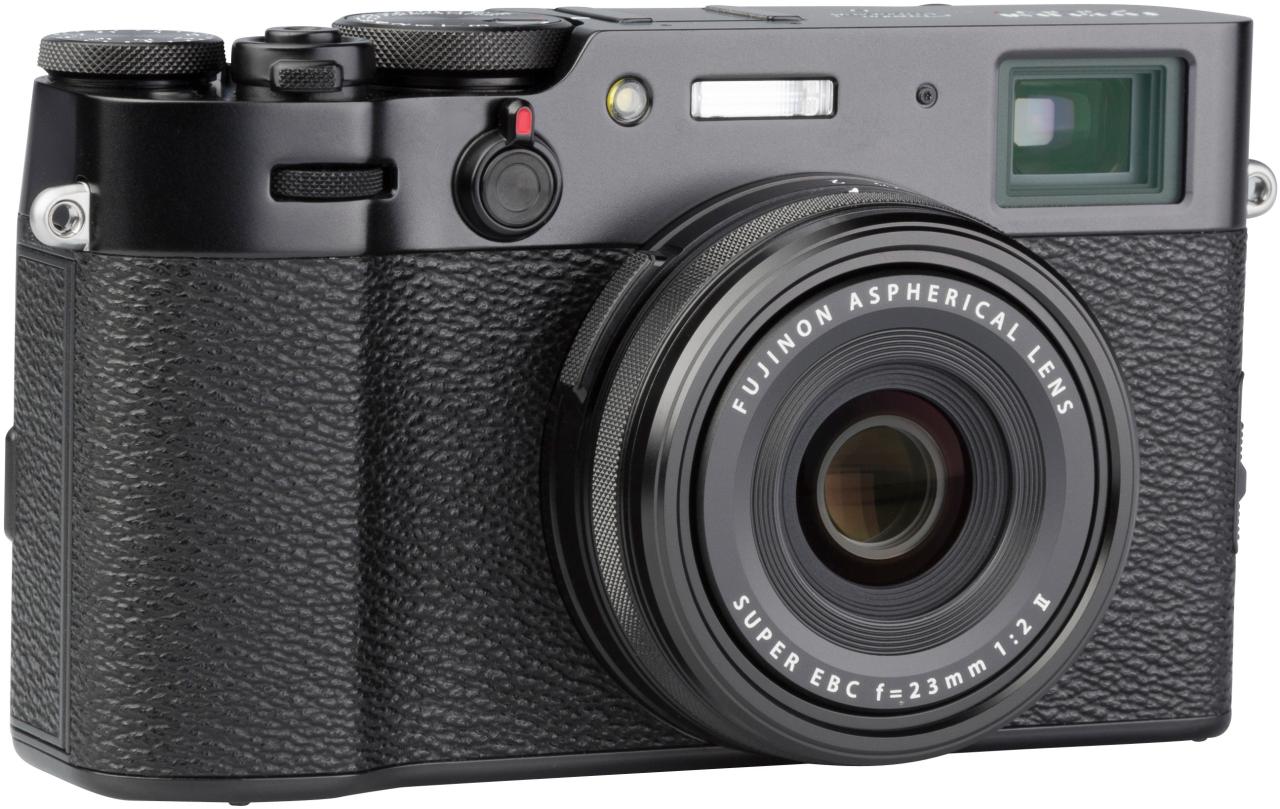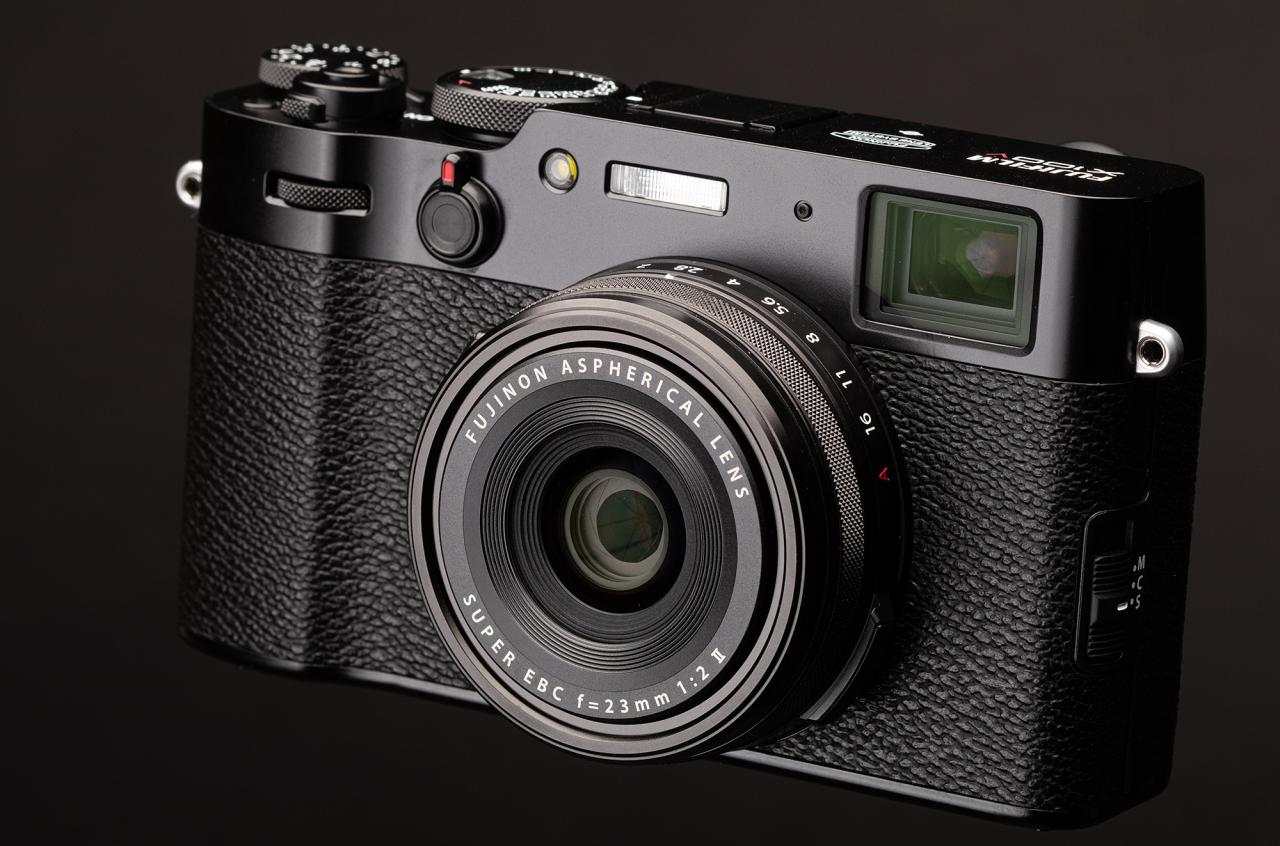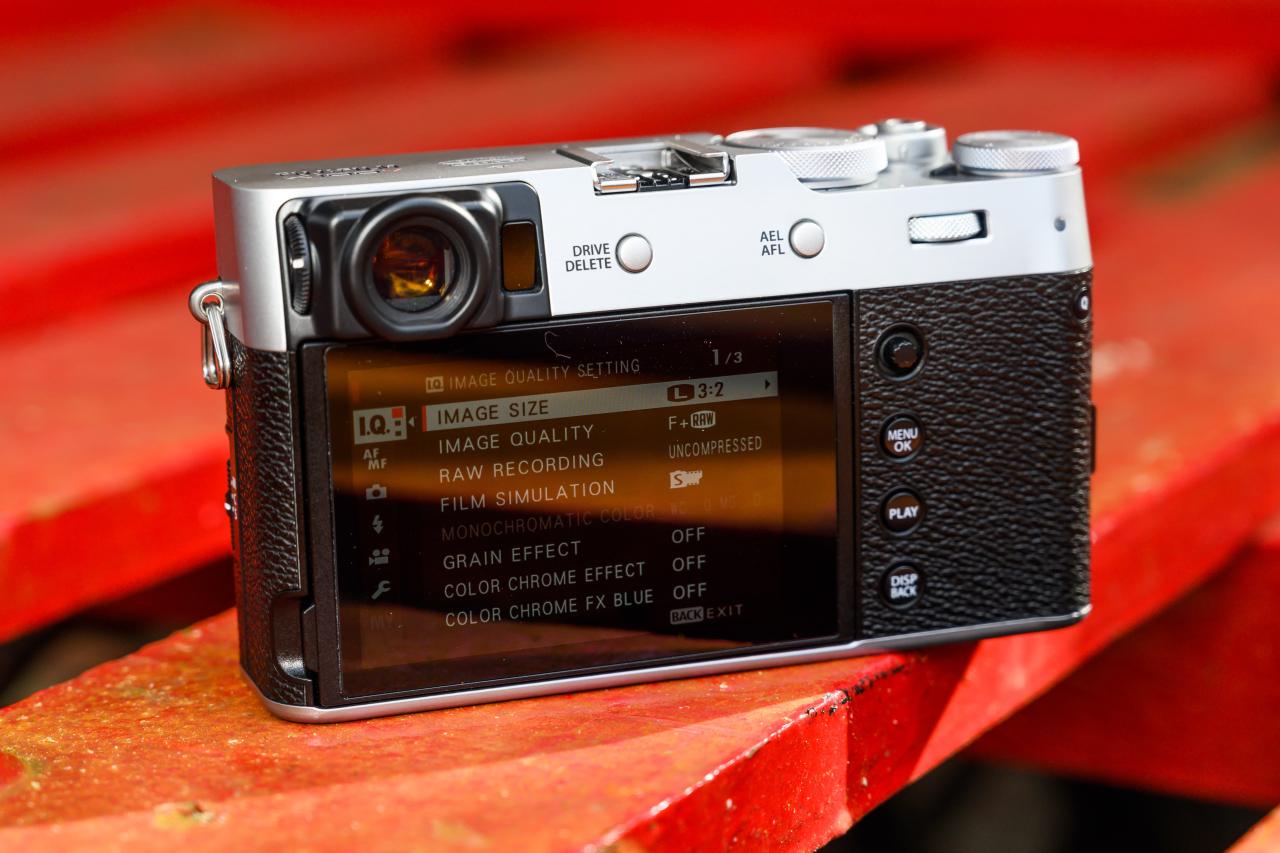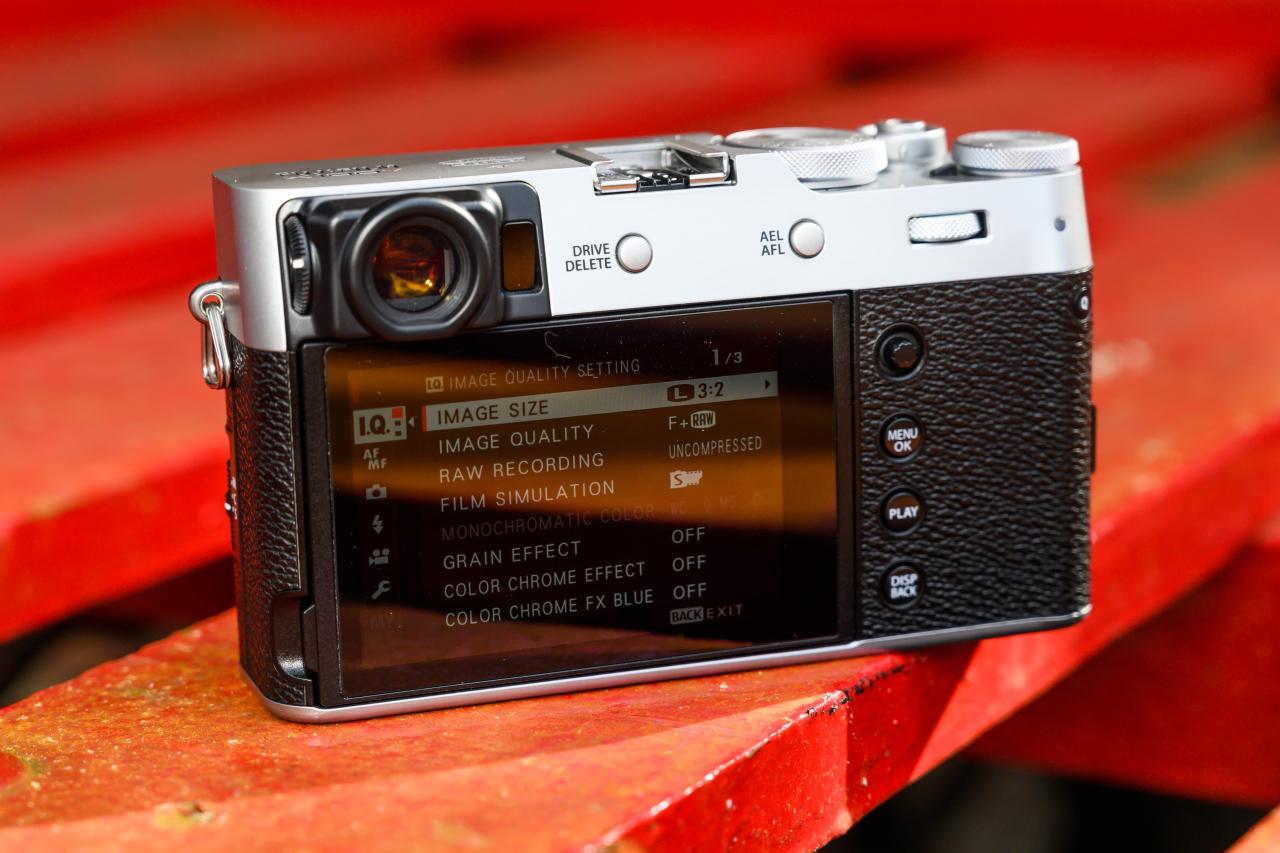The Fujifilm X100V stands as a testament to the enduring appeal of rangefinder-style cameras. This compact powerhouse seamlessly blends classic aesthetics with modern technology, offering a compelling photographic experience for both enthusiasts and professionals. Its refined design, exceptional image quality, and intuitive operation make it a highly sought-after camera, but does it live up to the hype? This review delves into the details, exploring its features, performance, and overall usability to provide a comprehensive assessment.
From its impressive 26.1MP X-Trans CMOS 4 sensor to its versatile hybrid viewfinder and advanced autofocus system, the X100V presents a compelling package. We’ll examine its image quality across various shooting scenarios, analyze its ergonomic design, and discuss its video capabilities, ultimately determining whether this camera is the right fit for your needs.
Fujifilm X100V: A Deep Dive

The Fujifilm X100V, a compact camera with a retro aesthetic and powerful performance, has cemented its place as a favorite among both professionals and enthusiasts. This review delves into the camera’s key features, image quality, ergonomics, user experience, lens capabilities, and video recording features, providing a comprehensive overview of its strengths and weaknesses.
The Fujifilm X100V, with its renowned image quality and compact design, is a popular choice for street photography. Its versatility extends beyond personal use; professionals might consider pairing it with resources like those found at the port dover camera website for potential collaborations or equipment rentals. Ultimately, the X100V’s portability makes it an ideal camera for diverse photographic endeavors.
Camera Features and Specifications

The Fujifilm X100V boasts a 26.1MP X-Trans CMOS 4 sensor, a significant upgrade from its predecessors. This sensor, combined with the X-Processor 4, delivers exceptional image quality and speed. The camera lacks in-body image stabilization (IBIS), relying instead on lens-based stabilization. This is a notable difference compared to some competitors, impacting low-light handheld shooting. The X100V’s autofocus system is a hybrid system combining phase detection and contrast detection, offering improved speed and accuracy compared to the X100F.
This results in faster and more reliable focusing, particularly in challenging lighting conditions.
| Feature | Fujifilm X100V | Sony RX1R II | Ricoh GR III |
|---|---|---|---|
| Sensor | 26.1MP X-Trans CMOS 4 | 42.4MP Full-frame CMOS | 24.2MP APS-C CMOS |
| Lens | 23mm f/2 | 35mm f/2 | 28mm f/2.8 |
| Image Stabilization | Lens-based | Sensor-shift | None |
| Autofocus | Hybrid (Phase & Contrast Detection) | Contrast Detection | Contrast Detection |
Image Quality and Performance
The X100V is renowned for its exceptional color science, offering a range of film simulations that emulate classic Fujifilm film stocks. These simulations provide unique looks and tones, allowing for creative control over the final image. The camera’s dynamic range is excellent, capturing details in both highlights and shadows, even in challenging lighting situations. High ISO performance is also commendable, with minimal noise at relatively high ISO settings.
- Low-light scene: A dimly lit street scene captured at ISO 3200 shows minimal noise and retains excellent detail, showcasing the camera’s impressive high ISO capabilities. The film simulation “Classic Chrome” added a unique vintage feel.
- Bright outdoor scene: A sunny landscape shot at ISO 200 demonstrates the camera’s impressive dynamic range, capturing both the bright sky and the shaded foreground with detail. The “Acros” film simulation produced a monochrome image with exceptional contrast and tonal range.
- Indoor portrait: A portrait taken indoors under artificial lighting at ISO 800 shows accurate skin tones and excellent sharpness. The “Provia” film simulation provided a natural and realistic look.
JPEGs from the X100V are excellent straight out of camera, thanks to the film simulations and in-camera processing. RAW files offer greater flexibility for post-processing, allowing for more adjustments to exposure, white balance, and other parameters. RAW files maintain a greater level of detail and dynamic range compared to JPEGs, providing more latitude for creative adjustments.
Ergonomics and Design, Fujifilm x100v
The X100V maintains the classic rangefinder style of its predecessors, with a compact and lightweight body. Its dimensions and weight make it highly portable, ideal for everyday carry. Key design elements like the physical aperture ring and shutter speed dial contribute to intuitive and quick adjustments, enhancing usability. The placement of buttons and dials is well thought out, allowing for easy access to essential settings while shooting.
- Pros: Compact size, intuitive controls, classic design, high-quality build.
- Cons: Limited button customization, no touchscreen for menu navigation, relatively small viewfinder.
User Experience and Functionality

The X100V’s user interface is relatively straightforward, although it might take some time to fully master all the features and menu options. The hybrid viewfinder offers both optical and electronic viewing options, providing flexibility depending on shooting conditions. The camera’s menu system is well-organized, making it relatively easy to locate and adjust settings.
- Setting up for landscape photography:
- Select the “Landscape” scene mode.
- Set the aperture to f/8 or f/11 for maximum sharpness.
- Use a low ISO setting (ISO 100 or 200).
- Utilize a tripod for optimal stability.
Common user issues often involve understanding the hybrid viewfinder and mastering the extensive menu system. Online resources and tutorials can greatly assist in resolving these issues.
Lens and Accessories
The X100V’s built-in 23mm f/2 lens (35mm equivalent) is a high-quality prime lens known for its sharpness and beautiful rendering of images. It’s comparable to other premium compact prime lenses in its class, offering excellent image quality across its aperture range. The lens’s performance is consistently excellent, producing images with exceptional detail and minimal distortion.
- Wide aperture shot: A portrait taken at f/2 showcases a shallow depth of field, creating a beautifully blurred background and emphasizing the subject.
- Narrow aperture shot: A landscape photograph taken at f/11 demonstrates excellent sharpness and detail from foreground to background.
Recommended accessories include additional batteries, a high-quality memory card, and a lens hood for better protection and flare reduction.
Video Capabilities
The X100V can record 4K video at up to 30fps, along with various other resolutions and frame rates. While not a dedicated video camera, its video quality is comparable to other cameras in its price range. The video footage is generally sharp and detailed, benefitting from the excellent lens.
The Fujifilm X100V, with its exceptional image quality and compact design, is a photographer’s dream. Its versatility extends beyond landscapes; imagine capturing the stark imagery of a conflict zone, perhaps even documenting the aftermath of a shahed drone strike, though ethically responsible image capture would always be paramount. Returning to the X100V, its retro aesthetic and intuitive controls make it perfect for capturing candid moments, contrasting sharply with the often impersonal nature of drone footage.
- 4K footage: A sample video shows good detail and color reproduction, but autofocus can be a bit slow during transitions.
- 1080p footage: The 1080p footage demonstrates smoother autofocus performance compared to 4K, with a slightly higher bitrate resulting in cleaner images.
Limitations include the lack of in-body image stabilization, which can impact handheld video stability, and the limited video recording time before overheating.
The Fujifilm X100V emerges as a strong contender in the premium compact camera market. Its blend of retro aesthetics, advanced features, and exceptional image quality makes it a joy to use. While certain limitations exist, particularly regarding video capabilities, the overall experience is undeniably rewarding. Whether you’re a seasoned photographer or a passionate enthusiast, the X100V offers a unique and satisfying way to capture the world around you.
Its strengths far outweigh its weaknesses, solidifying its position as a top choice for those seeking a compact camera with professional-grade performance.
Question & Answer Hub
What is the battery life like on the Fujifilm X100V?
Battery life is generally considered adequate for a day’s shooting, but users may wish to carry a spare battery, especially when extensively using the viewfinder or recording video.
Does the Fujifilm X100V have weather sealing?
No, the Fujifilm X100V lacks weather sealing, so it’s not recommended for use in inclement weather.
Can I use external microphones with the Fujifilm X100V?
Yes, the X100V features a 3.5mm microphone jack for external audio input.
How does the X100V’s film simulations compare to other cameras?
Fujifilm’s film simulations are widely praised for their accuracy and aesthetic appeal, often considered superior to those found in many competitor cameras.
